Disability Inclusion Works for All
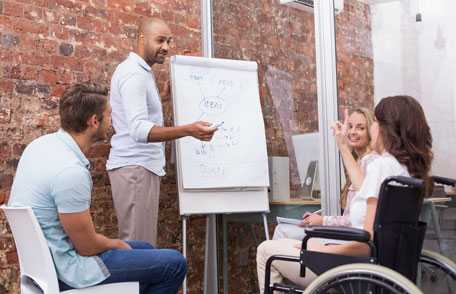 Building an inclusive workforce where people with disabilities can actively participate and contribute is everybody’s job.
Building an inclusive workforce where people with disabilities can actively participate and contribute is everybody’s job.
According to a recently released report, approximately 1 in 8 (22.6 million) working-age adults have a disability. However, less than half of them are in the labor force, either working or looking for a job. Among those in the labor force, adults with disabilities are twice as likely to be unemployed as people without disabilities.1 Although progress has been made through federal policies, such as the American with Disabilities Act (ADA), that have provided people with disabilities better access to buildings, transportation, and employment, there is still work to be done. Working together, public health professionals, employers and communities can address barriers that may be keeping people with disabilities from getting into the workforce and obtaining the positive benefits associated with employment.
We can all benefit from the talents, skills, and dedication that people with disabilities bring into the workplace.
Leading by Example
On July 26, 2010, President Obama issued Executive Order 13548 [135 KB], providing that the Federal Government, the nation’s largest employer, become a model for employing people with disabilities.
CDC is working toward this goal to create a diverse workforce that reflects the people we want to serve. Currently CDC has 1,231 employees who self-identify as a person with a disability, representing 13% of its permanent workforce. Here are some of their stories:
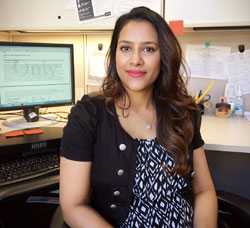
Suhana
Suhana’s story
Suhana is an epidemiologist with the Child Development and Disability Branch’s Early Hearing Detection and Intervention (EHDI) team at the National Center on Birth Defects and Developmental Disabilities (NCBDDD). The EHDI team works to identify all babies who are born deaf or hard of hearing, and make sure they receive the critical services they need to be able to communicate and reach their full potential.
Suhana herself was screened for hearing loss at birth and she was found to be hard of hearing. As a result of this early diagnosis, her parents were able to gain the knowledge they needed to make sure that Suhana could reach her full potential in life. They had access to early services from a team of physicians, speech therapists, counselors, and teachers, and now Suhana is working to make sure that all babies born with hearing loss have the same opportunities she had.In this video, Suhana explains the purpose and mission of the EHDI Program
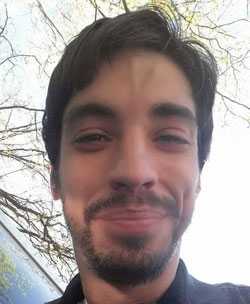
John
John’s story
John is a Management and Program Analyst with the School Health Branch at the Division for Population Health (DPH). DPH manages programs that provide cross-cutting approaches to promoting health for school-age children and adolescents.
John is currently working on a project called the Virtual Healthy School. It’s a school on the web that allows users to navigate from room to room where they can see good examples of school heath practices based on DPH’s Whole School, Whole Child, Whole Community Model.
John had a spinal cord injury when he was a teenager, and as a wheelchair user, he can bring a unique perspective to his projects. In this case, he was able to provide recommendations to make the project inclusive and help make sure all children have access to the programs offered at schools that promote health.
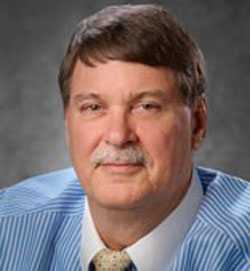
Darlo
Darlo’s Story
Darlo is the Disability/Affirmative Employment Program Manager with the Office of Equal Employment Opportunity (OEEO). Darlo has a degree in rehabilitation counseling and works to make sure employees with disabilities at CDC have access to their facilities by receiving accommodations they need to perform at their best.
He was injured in a motorcycle accident in 1969 which caused a spinal cord injury with paralysis in all four limbs. When he attended college after his accident, his classmates had to carry him in his wheelchair up multiple flights of stairs just to get to class.
“We have come a long way,” he says, “but we still have a lot to do.”
Darlo’s work is his passion, and he is committed to supporting OEEO’s mission to foster an inclusive culture, nationally and internationally, through equity, opportunity, and respect. You can see his “I am CDC” video to learn more about Darlo and his work.
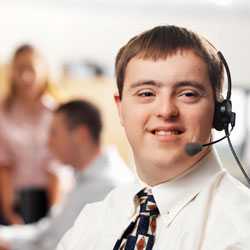
Disability Inclusion Works for All
CDC-Funded National and State Disability and Health Programs
CDC is committed to supporting its employees while also helping people with disabilities gain access to programs and resources that can improve their health and well-being. The Disability and Health Branch at NCBDDD’s Division of Human Development and Disability (DHDD) currently supports 19 State Disability and Health Programs and two National Centers on Disability.
State Disability and Health Programs inform policy and practice at the state level. These programs ensure that individuals with disabilities are included in ongoing activities within the state that prevent disease and promote health.
The National Centers on Disability develop, implement, evaluate, and report on activities aimed at reducing health differences between people with and without disabilities and improving the health of people with mobility limitations and/or intellectual disabilities across their lifespans.
References
- Stevens AC, Carroll DD, Courtney-Long EA, Zhang QC, Sloan ML, Griffin-Blake S, Peacock G. Adults with One or More Functional Disabilities — United States, 2011–2014. MMWR Morb Mortal Wkly Rep 2016;65:1021-1025.
- Page last reviewed: November 15, 2016
- Page last updated: November 15, 2016
- Content source:
- National Center on Birth Defects and Developmental Disabilities
- Page maintained by: Office of the Associate Director for Communication, Digital Media Branch, Division of Public Affairs




 ShareCompartir
ShareCompartir